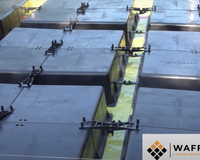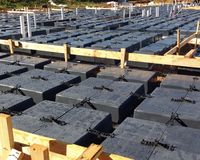Both geotechnical engineers and structural engineers fulfill key roles in the effective design of the project. The role of the geotechnical engineer is, of course, to investigate the proposed building site first through conducting soil borings and/or digging test pits on the site to explore the character of soils at the site. Then the geotechnical engineer analyzes the field-exploration results and conducts laboratory tests to characterize the soil conditions found on the site. An important emphasis here is for the owner/developer of the project to allocate a solid budget to allow the geotechnical engineer to properly perform the necessary field investigation process and analyze the results in the laboratory. The geotechnical engineer then issues a report that will be utilized by both the structural engineer in the project-design phase as well as field-construction personnel during the construction phase.

There are overall two types of foundation systems: shallow and deep. Shallow foundations transfer the structural loads to the earth at the base of the slab-on-grade, column footing or wall footing as examples. Deep foundations with either piles or caissons penetrate layers of incompetent soils in order to therefore support the foundation to competent bearing soil or bedrock as examples. Due to a lower-cost profile, a preferred foundation system is a shallow foundation. In addition, there are varieties of shallow foundations with varying cost structures. Decisions by the structural engineer as to shallow, deep, hybrid, or other designs rely on the findings from the geotechnical investigation. 
The structural engineer needs quality geotechnical information to develop the best design possible given the soil conditions present at the site. If the soils investigation has been limited unnecessarily, this lack of adequate and usable information will impede the structural engineer’s foundation design. The geotechnical investigation provides, in essence, clues to what lies beneath the surface of the ground. The greater the degree of investigation then the more clues will be provided that then contribute to a greater understanding of the soil conditions on the site.
Building codes provide tables that show allowable soil-bearing values as an example and these published tabular values in the code can be utilized for structural-design purposes. This depends upon local governmental regulations as well that may dictate geotechnical requirements for construction projects. However, these published-code values tend to be somewhat conservative and so therefore a careful geotechnical investigation can allow the utilization of increased soil-boring values.
As another example, the International Building Code (IBC), adopted throughout the United States by most jurisdictions, allows a soil-bearing value of 3,000 pounds per square foot (psf) for sandy-gravel soil but a much lower soil-bearing value of 2,000 psf for soils characterized as silty-gravel (2021 IBC Chapter 18). The plan for the building may include a 12-foot depth basement. The geotechnical investigation informs the structural engineer as to what the soils actually consist of onsite at this 10-foot depth for the basement-foundation work. The ability to utilize 3,000 psf soil-bearing values versus 2,000 psf means that significantly-less expensive foundations are now a sound choice for the project. However, the structural engineer will not know this without the geotechnical work and therefore relies upon the geotechnical work to make these informed decisions.

Soil conditions can vary extensively across a job site. As one example, a branch bank building was built with a conventional slab-on-grade foundation a few decades back when drive-in banking services were uncommon. However, as time moved on with the emphasis on drive-up banking, the branch bank decided to add a separate drive-in banking structure on the same lot at a distance from the bank itself due to traffic/existing-bank considerations. However the geotechnical investigation found that the drive-in structure would be on the edge of an old marsh area and therefore require more expensive pile foundations. In the latter case, without a geotechnical investigation, structural settlement/operational problems would have taken place without this deeper foundation system.
Think of the ramifications if the bank simply told the structural engineer to dust off and use the old geotechnical report instead of having the architect request a new geotechnical report for use by the structural engineer. In this case, the architect had had another nearby project that at excavation had encountered some this previous marsh area therefore the insistence on a new geotechnical investigation.
In areas with standard-value chemically-hot sulfate-laden soils, the typical specification is for the use of an ASTM Type 5 Cement for foundation concrete. This Type 5 Cement has high resistance to sulfate attack and is a common requirement in certain areas of the United States. However, depending upon the area, other protections such as specialized coating systems for concrete foundations may also be a necessary design requirement by the structural engineer. Again, the structural engineer is going to need the analysis conducted by the geotechnical engineer to make informed decisions in this area to protect foundation concrete. The same would apply to high water tables for a proposed design which may mean a permanent dewatering system for the particular building to ensure below-grade construction does not suffer from long-term water-intrusion issues.

This writer’s experience is that when corners are cut with severely limited budgets in terms of the geotechnical investigation this then can significantly impact the foundation design by the structural engineer.
Numerous conversations over the years with geotechnical professionals have found a common issue is the failure to spend adequate amounts on geotechnical investigations. A similar conversational thread has been found with structural engineers in wanting more in-depth geotechnical work but not getting this because of owner/developer budget limitations.
Unfortunately, what ends up taking place in a number of situations over the years is the old SNARL Principle. Many recognize the acronym SNARL for Save Now And Repay Later. Shortcuts in design including geotechnical investigations may seem to initially make sense but then the end result can be projects that experience significant foundation distress due to issues illustrated above such as soils issues and water-table issues.





